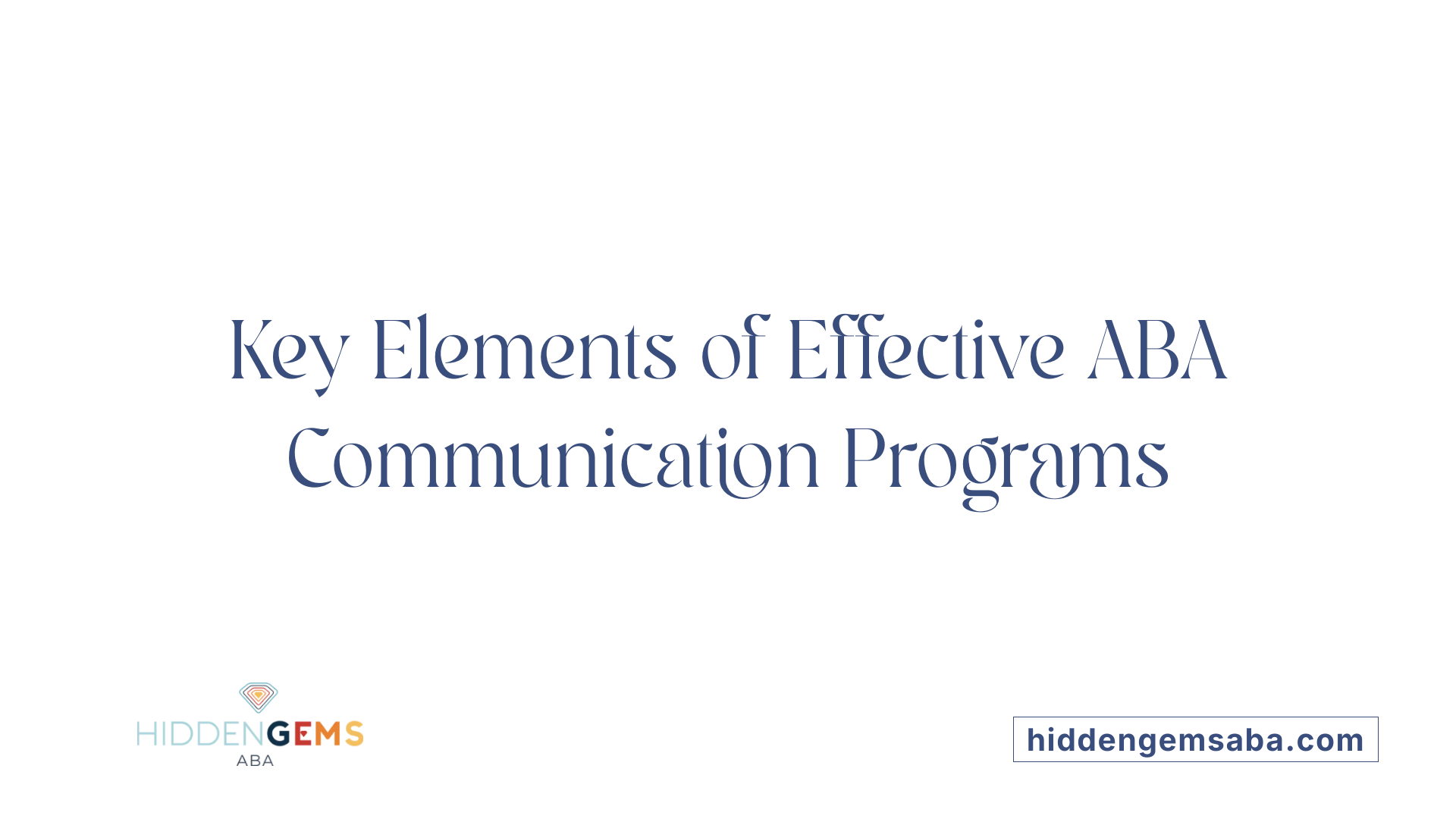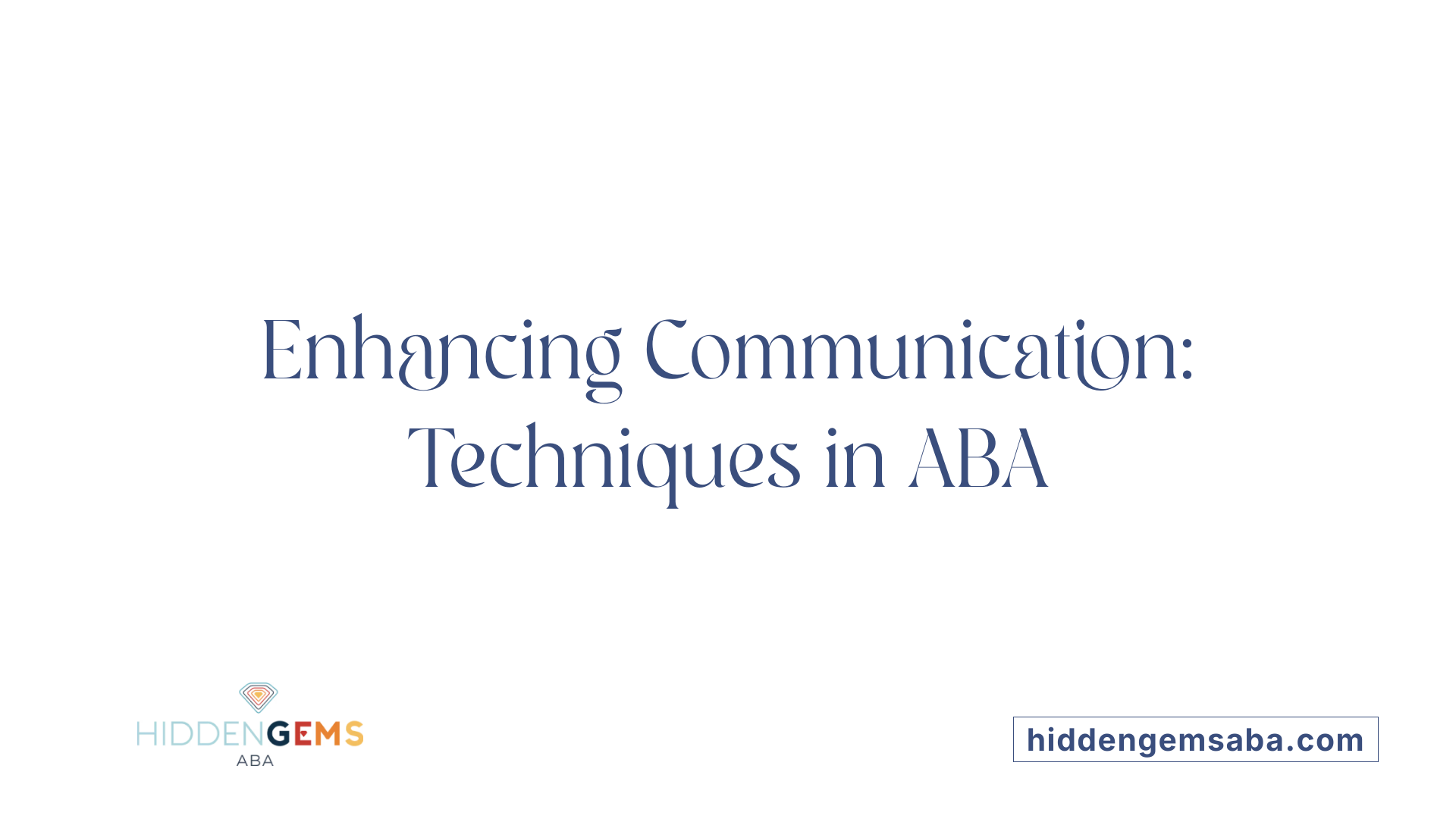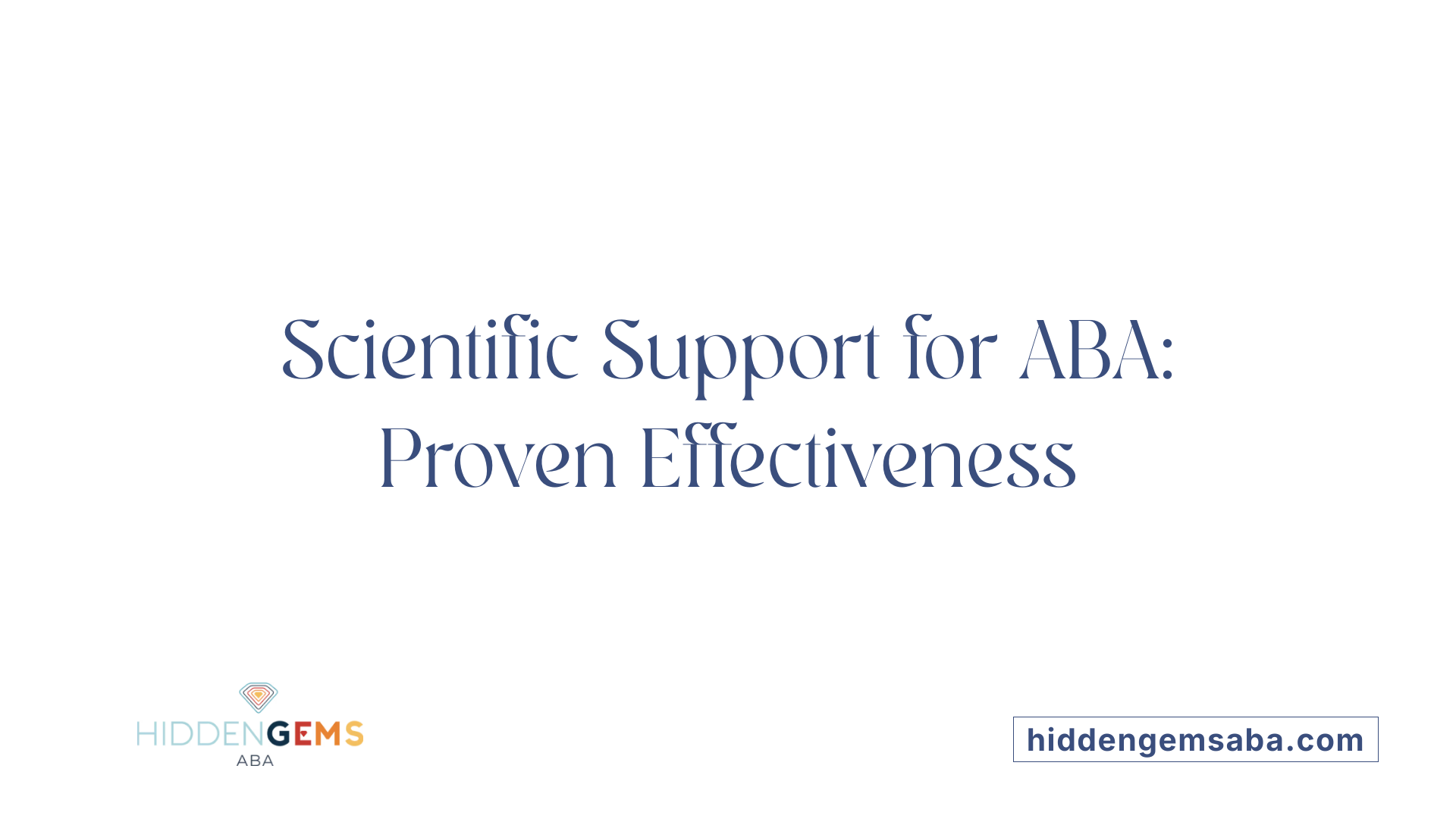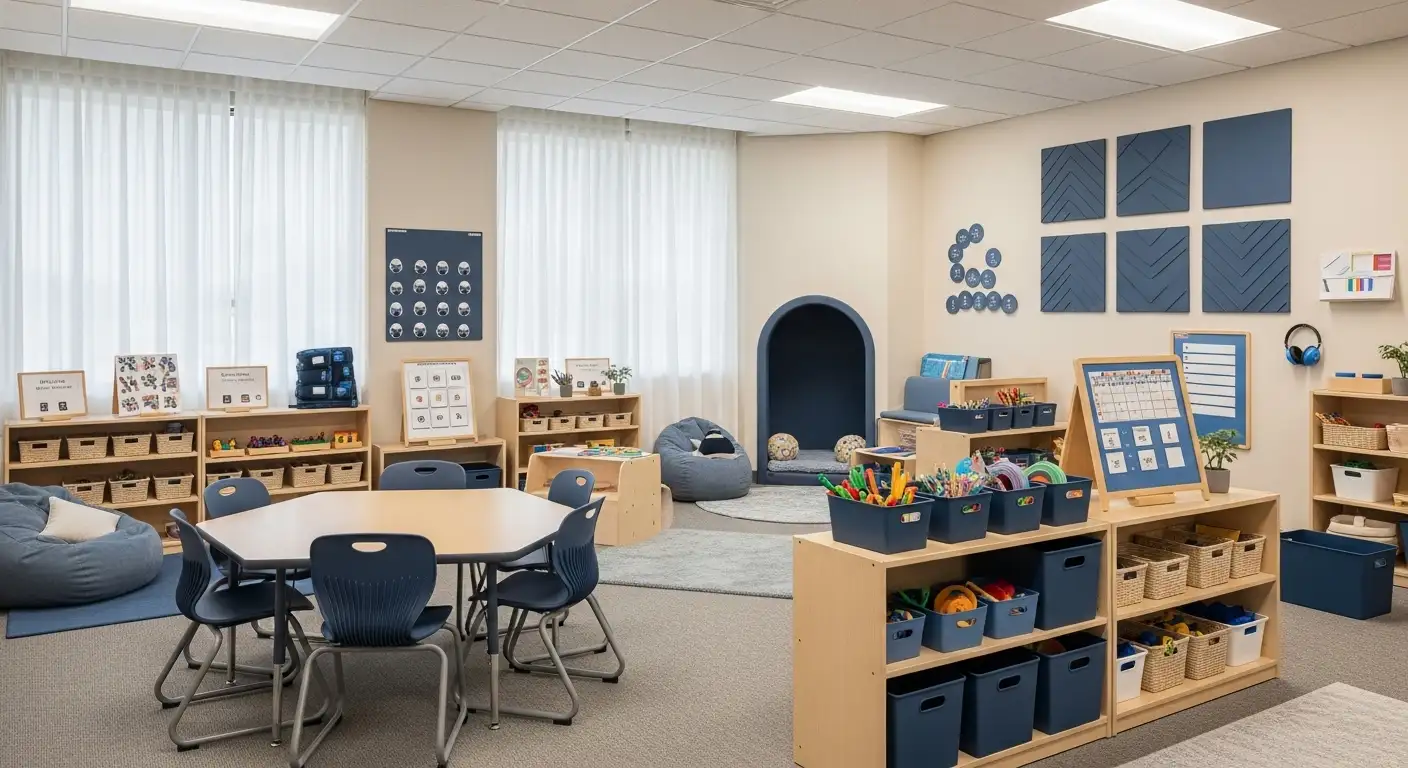Understanding the Role of ABA Therapy in Autism
Applied Behavior Analysis (ABA) therapy has emerged as a scientifically supported method that significantly enhances communication skills in children with autism spectrum disorder (ASD). Tailored interventions designed and overseen by specialized professionals have made ABA a cornerstone approach in helping children develop critical interpersonal and language abilities, improving their overall quality of life.
What is ABA Therapy and Its Use in Supporting Children with Autism?

What is Applied Behavior Analysis (ABA) therapy and how is it used to support individuals with autism?
Applied Behavior Analysis (ABA) therapy is an evidence-based treatment founded on the science of learning and behavior analysis. This therapy is specifically designed to aid individuals with autism in acquiring essential skills while reducing challenging behaviors. ABA therapy programs are customized to each child’s unique strengths, interests, and needs and are developed and supervised by Board Certified Behavior Analysts (BCBAs).
How does ABA therapy work?
The therapy operates by analyzing the environment’s influence on behavior using the A-B-C model—Antecedents (what happens before a behavior), Behavior, and Consequences. It breaks down complex skills into smaller, manageable steps and employs positive reinforcement such as verbal praise, tangible rewards, and visual aids including picture cards or games to encourage desired behaviors.
Techniques and methods
ABA incorporates techniques like Discrete Trial Training (DTT), Natural Environment Teaching (NET), Pivotal Response Treatment (PRT), and Verbal Behavior Therapy (VBT). These approaches help develop communication skills (expressive and receptive), social interactions, daily living abilities, and academic skills. Tools such as Augmentative and Alternative Communication (AAC) devices support non-verbal communication.
Individualized, adaptable, and comprehensive
Each ABA program is highly individualized and adaptable to various environments including home, school, and community settings. Data collection and ongoing assessments ensure that therapy remains effective and responsive to the child’s evolving needs.
Benefits of early intervention
Starting ABA therapy early, ideally between ages 2 and 6, leverages critical developmental windows. Early intensive intervention significantly improves socialization, communication, self-care, emotional regulation, and reduces challenging behaviors, thereby enhancing overall quality of life and promoting independence.
Through these structured, personalized approaches, ABA therapy equips children with autism to engage meaningfully with their environment, establishing skills foundational to lifelong learning and social integration.
Who Provides ABA Therapy and Their Qualifications?

Roles of BCBAs, RBTs, and Therapists
ABA therapy is primarily provided by a team of professionals with specific roles. Board Certified Behavior Analysts (BCBAs) lead the team by designing, overseeing, and regularly monitoring personalized ABA programs. Registered Behavior Technicians (RBTs) and other therapists implement these treatment plans on a daily basis, working directly with the child to apply behavioral techniques.
Training and Certification Requirements
BCBAs hold advanced certifications in behavior analysis, demonstrating mastery of ABA principles and ethical guidelines. RBTs and therapists receive specialized training in applying ABA methods, including positive reinforcement, data collection, and behavior tracking. All providers undergo background checks and are required to complete continuing education to maintain their certifications.
Supervision and Monitoring Process
BCBAs provide ongoing supervision to ensure therapy goals are met effectively. They monitor data collected by therapists, adjust intervention plans as needed, and conduct regular assessments to track progress. This structured oversight helps maintain high standards of care throughout the treatment.
Collaboration with Families
Therapists and BCBAs work closely with families to tailor interventions and reinforce strategies at home. Family involvement enhances therapy consistency and promotes generalization of skills across different settings, leading to better outcomes.
Standards of Professional Practice
All ABA service providers follow evidence-based, ethical practices guided by professional organizations. They ensure individualized, data-driven programming and maintain open communication with clients and caregivers, supporting a respectful and supportive therapeutic environment.
Core Components of ABA Therapy Programs for Communication Improvement

Assessment Process and Individualized Goals
ABA therapy begins with a thorough assessment conducted by a board-certified behavior analyst (BCBA). This evaluation identifies each child's unique strengths, challenges, and developmental needs. Based on this assessment, personalized goals are established, focusing on communication, social skills, daily living tasks, and academic performance.
Discrete Trial Training and Naturalistic Teaching
Structured methods like Discrete Trial Training (DTT) break complex skills into smaller, manageable parts, helping children learn step-by-step through repetition and reinforcement. Complementing this, naturalistic teaching strategies integrate learning into everyday settings, promoting the use of communication and social skills in meaningful, real-world interactions.
Positive Reinforcement and Data Collection
ABA therapy relies heavily on positive reinforcement—rewarding desired behaviors with praise, tangible rewards, or other motivators. Systematic data collection during sessions tracks progress and informs ongoing adjustments, ensuring therapy remains effective and responsive to the child’s evolving needs.
Targeted Skills: Communication, Social, and Daily Living
Programs focus on expressive and receptive communication, expanding vocabulary, sentence use, and understanding non-verbal cues. Social skills like turn-taking, sharing, and eye contact are developed through group learning and peer interactions. Daily living skills, such as dressing, toileting, and self-care, are also emphasized to foster independence.
Family and Caregiver Involvement
Active engagement of families and caregivers is crucial. They receive training to implement strategies consistently across home routines, reinforcing progress and reducing behavioral challenges beyond therapy sessions.
Skill Generalization Across Environments
ABA therapy promotes generalizing skills learned in clinical settings to school, home, and community environments. Techniques like natural environment teaching help children apply communication and behavioral skills in diverse contexts, reinforcing lasting improvements.
Techniques and Strategies ABA Uses to Enhance Communication Skills

Prompting, Modeling, and Imitation
ABA therapy uses prompting to guide children toward desired communication behaviors, gradually fading support as skills develop. Modeling and imitation are key, where therapists demonstrate language use or social interactions, encouraging children to replicate these behaviors to strengthen communication abilities.
Verbal Behavior Therapy Operants
Verbal Behavior Therapy (VBT) breaks down language into functional units called operants. These include mands (requests), tacts (labeling), echoics (repetition), intraverbals (conversational responses), and autoclitics (modifiers). ABA programs target each operant to teach practical, meaningful communication.
Use of AAC Devices such as PECS
For non-verbal or minimally verbal children, augmentative and alternative communication (AAC) devices support expression. Picture Exchange Communication Systems (PECS) allow children to use pictures to communicate needs or thoughts, while speech-generating devices provide voice output to enhance interaction.
Natural Environment Teaching and Play Therapy
Natural Environment Teaching (NET) incorporates communication learning into everyday activities and play, promoting skill generalization in real-world settings. Play therapy helps children practice expressing and managing emotions, using social cues naturally during engaging, child-directed activities.
Discrete Trial Training and Pivotal Response Treatment
Discrete Trial Training (DTT) breaks skills into small, teachable units practiced through repetition and reinforcement. Pivotal Response Treatment (PRT) focuses on motivation and responsiveness, encouraging communication in natural, meaningful contexts, fostering spontaneous language use.
Positive Reinforcement and Rewarding Progress
Central to ABA, positive reinforcement motivates children by rewarding successful communication attempts with praise, tokens, or preferred activities. This approach encourages consistent skill acquisition and helps maintain engagement throughout therapy.
These combined techniques create a comprehensive and individualized approach to enhancing communication skills in children with autism, fostering both expressive and receptive language development in supportive, motivating environments.
Evidence Base Supporting ABA Therapy’s Effectiveness

What evidence supports the effectiveness of ABA therapy for individuals with autism?
The evidence supporting ABA therapy's effectiveness for autism is extensive and well-documented. Numerous research studies and meta-analyses confirm that ABA significantly improves communication, social skills, and daily living abilities in individuals with autism spectrum disorder (ASD).
Research studies and meta-analyses
Clinical trials and over 20 scientific studies have established ABA as an evidence-based, best practice treatment. These studies show that ABA interventions, particularly those initiated early and delivered intensively, lead to measurable gains in intellectual functioning, language development, and behavioral regulation.
Improvements in expressive and receptive language
ABA therapy enhances both expressive language—how a child communicates thoughts and feelings—and receptive language, which involves understanding others. Techniques like Discrete Trial Training (DTT), Verbal Behavior Therapy (VBT), and naturalistic teaching methods boost vocabulary, sentence building, and comprehension skills.
Social skill development and reduced problem behaviors
ABA promotes essential social behaviors such as turn-taking, sharing, and eye contact while reducing challenging behaviors like tantrums and aggression. Group learning and peer-mediated interventions foster social connections and appropriate communication.
Endorsements from professional bodies
Major organizations, including the US Surgeon General and the American Psychological Association, recognize ABA as a scientifically validated therapy for autism, underscoring its widespread acceptance in the professional community.
Long-term developmental gains with early intervention
Starting ABA therapy early, ideally before age six, takes advantage of brain plasticity during critical developmental windows. Early and sustained ABA treatment leads to improved independence, emotional regulation, and academic achievement over the long term.
Integration of modern, naturalistic teaching methods
Contemporary ABA approaches incorporate natural environment training and play therapy to generalize skills across real-world settings. Combining structured techniques like prompting, modeling, and positive reinforcement with naturalistic strategies enhances learning effectiveness and ensures skills transfer beyond therapy sessions.
Through rigorous scientific validation and professional endorsement, ABA therapy remains a cornerstone treatment, offering personalized support that advances communication, social engagement, and adaptive functioning for children with autism.
Challenges and Criticisms of ABA Therapy and Ongoing Adaptations

What challenges or criticisms are associated with ABA therapy?
Applied Behavior Analysis (ABA) therapy, despite its proven effectiveness in improving communication, social skills, and daily functioning in children with autism, faces several critiques. A primary concern revolves around the intensity and repetitive nature of traditional ABA programs, which some individuals find overwhelming or stressful. This intensity can sometimes result in therapy feeling rigid, lacking flexibility to accommodate a child's emotional and sensory needs.
Critics argue that conventional ABA methods often emphasize modifying behaviors to conform to neurotypical norms, potentially neglecting the individual's emotional well-being and unique preferences. Such an approach may unintentionally suppress natural behaviors without fully considering their underlying causes or the person's comfort.
In response, the field has been moving towards more person-centered approaches. Modern ABA incorporates naturalistic, play-based techniques that foster respectful and supportive environments. These adaptations aim to balance behavior change with emotional health, ensuring children feel valued and autonomous.
Tailored interventions are increasingly emphasized, recognizing the importance of neurodiversity acceptance. This shift prioritizes helping individuals develop skills while honoring their individuality and promoting independence rather than enforcing conformity.
The ongoing dialogue underscores the necessity of refining ABA therapy to be compassionate, personalized, and empowering—fostering autonomy, respect, and positive outcomes for those on the autism spectrum.
Impact of ABA Therapy on Communication and Quality of Life

How Does ABA Therapy Enhance Expressive and Receptive Language?
ABA therapy targets both expressive language—using words and sentences to communicate thoughts and needs—and receptive language, which is understanding what others communicate. Techniques like discrete trial training (DTT), visual aids, and natural environment teaching (NET) help expand vocabulary, develop sentence structures, and improve listening skills. Verbal Behavior Therapy categorizes language into functional units such as mands (requests) and tacts (labels), enabling children to communicate effectively.
How Are Social and Pragmatic Communication Skills Developed?
ABA facilitates the learning of social communication through structured activities that teach taking turns, greeting, sharing, and making eye contact. Peer-mediated interventions encourage children to practice these skills with peers, promoting natural social interactions. Use of modeling and reinforcement supports the acquisition of pragmatic language—how to use language appropriately in social contexts.
In What Ways Does ABA Improve Emotional Regulation and Reduce Challenging Behaviors?
ABA incorporates functional behavior assessments to understand causes of challenging behaviors like tantrums or aggression. Through positive reinforcement and functional communication training, children learn to express emotions appropriately and replace problematic behaviors. Play therapy and natural environment training enhance management of emotions such as frustration and anger.
How Does ABA Promote Independence and Daily Living Skills?
The therapy teaches essential life skills including dressing, hygiene, and meal preparation using step-by-step instruction and repetition. Skills like brushing teeth and tying shoes are reinforced, bolstering confidence and autonomy. Visual schedules and prompts support routine completion, reducing reliance on caregivers.
What Are the Benefits of Family Involvement and How Are Gains Maintained?
Family participation is vital to sustain progress. Parents implement ABA strategies in daily routines, fostering consistency and generalization of skills beyond therapy sessions. Ongoing collaboration with therapists ensures that plans adapt as the child's needs evolve, helping to reduce family stress and improve outcomes.
What Overall Improvements in Social Interactions and Personal Connections Are Seen?
Children receiving ABA therapy often show better engagement with peers and adults, enhanced ability to follow social cues, and reduced behavioral challenges. These improvements contribute to stronger relationships, improved academic functioning, and higher quality of life. The therapy’s individualized, evidence-based approach supports lasting growth in communication, social skills, and independence.
Conclusion: ABA Therapy as a Transformative Tool for Communication Development
ABA therapy stands as a scientifically validated and personalized intervention that substantially improves communication skills in children with autism spectrum disorder. By employing diverse, evidence-based techniques and involving highly trained professionals, ABA addresses not only language development but also social interaction, emotional regulation, and daily living independence. Despite past concerns, contemporary ABA practices emphasize respect, adaptability, and family engagement, making it a holistic tool to foster meaningful growth and enhance quality of life. Early and sustained interventions ensure children with autism gain foundational communication skills crucial for social integration, academic success, and personal empowerment, proving ABA’s vital role in unlocking their potential.
References
- 6 Benefits of ABA Therapy for Children with Autism
- Applied Behavior Analysis (ABA)
- How ABA Therapy Can Improve Communication Skills in ...
- Benefits of ABA Therapy for Children with Autism
- Enhancing Communication Skills With ABA Therapy
- 5 Benefits of ABA Therapy for Autistic Child
- How ABA Therapy Can Improve Your Child's Life
- Applied Behavior Analysis (ABA)
- Understanding ABA Therapy: What It Is and How It Works |





